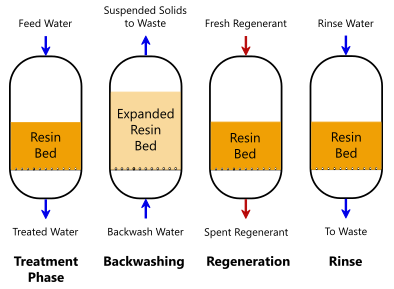Effective PFAS Waste Management in Industrial Environments
Effective PFAS Waste Management in Industrial Environments
Blog Article
Exactly How PFAS Therapy Guarantees Clean and Sustainable Water
The existence of PFAS, generally understood as "forever chemicals," postures substantial obstacles to water quality and public health. The ramifications of these treatments prolong past instant wellness benefits; they increase vital inquiries about lasting water monitoring techniques that need to be resolved to guarantee a resistant future.

Comprehending PFAS Contamination
PFAS, or per- and polyfluoroalkyl substances, have actually emerged as a significant ecological worry because of their widespread frequency and perseverance in the setting. These artificial chemicals have been used in various industrial applications and consumer items, including non-stick cookware, waterproof clothes, and food packaging, as a result of their one-of-a-kind properties such as water and grease resistance.
The contamination of soil and water resources by PFAS occurs mainly via industrial discharges, firefighting foam use, and leaching from land fills. pfas management. When released, these compounds are resistant to degradation, causing their buildup in the setting. This persistence increases critical concerns, as PFAS can take a trip cross countries with groundwater and surface area water supply, affecting drinking water supplies and environments

Wellness Risks of PFAS
The determination of PFAS in the environment elevates considerable health problems for individuals exposed to these compounds. Research has actually linked PFAS direct exposure to different adverse health and wellness effects, consisting of immune system dysfunction, liver damages, and increased threat of certain cancers cells.
The ubiquity of PFAS in customer products, such as non-stick pots and pans, water-repellent textiles, and food packaging, additional amplifies the danger of direct exposure. Consuming water infected with PFAS is a considerable concern, as these chemicals can leach right into groundwater sources. Prone populations, consisting of youngsters and those living near industrial sites, might face elevated threats due to their establishing systems and possible for higher exposure degrees.
As recognition of these health dangers proceeds to grow, governing agencies are beginning to develop guidelines for PFAS levels in alcohol consumption water. Public wellness initiatives are vital to mitigate exposure and safeguard neighborhoods from the long-term results of these unsafe substances.

Cutting-edge Treatment Technologies
Just how can we successfully tackle the obstacles presented by PFAS contamination in water resources? Innovative treatment modern technologies are becoming critical services in the pursuit for clean water. These techniques concentrate on the removal or devastation of per- and polyfluoroalkyl substances (PFAS), which are well-known for their perseverance in the environment.
One promising technique is adsorption using advanced materials, such as triggered carbon and ion exchange materials. These materials have revealed efficiency in capturing PFAS molecules from water. One more significant technology is membrane filtering, which uses nanofiltration and turn around osmosis to separate contaminants at the molecular level, therefore giving an obstacle against PFAS.
Additionally, advanced oxidation procedures (AOPs) use solid oxidants to damage down PFAS compounds into harmless results. This approach is particularly effective for treating extremely infected water resources. Bioremediation strategies, employing specific microorganisms, are also being checked site web out to break down PFAS.
As research study proceeds, crossbreed systems that incorporate numerous technologies may provide improved performance, resolving the intricacies of PFAS contamination. The growth and execution of these cutting-edge therapy modern technologies are essential steps toward ensuring the safety and sustainability of our water resources.
Benefits of Effective PFAS Therapy
Properly dealing with PFAS contamination in water sources considerably enhances public wellness and environmental try this out safety. PFAS, often described as "permanently chemicals," are resistant to degradation and can accumulate in the body, bring about severe health threats such as cancer cells, liver damage, and body immune system disorder. By executing effective therapy methods, areas can decrease exposure to these hazardous materials, eventually improving the wellness outcomes of their populaces.
Furthermore, effective PFAS treatment contributes to the conservation of local ecological communities. Polluted water can detrimentally impact aquatic life and interrupt the delicate equilibrium of neighborhood habitats. By making sure tidy water, treatment procedures safeguard biodiversity and keep ecological honesty.
Additionally, efficient PFAS removal can foster public self-confidence in water top quality. When communities are guaranteed that their alcohol consumption water is without hazardous pollutants, it advertises a feeling of safety and wellness. This trust fund is important for neighborhood involvement and assistance for recurring water management initiatives.
Future of Water Sustainability
Amidst expanding problems concerning water quality and scarcity, the future of water sustainability depends upon ingenious techniques and joint efforts. As neighborhoods deal with the impending hazards of impurities like PFAS, the growth of advanced treatment technologies is important. These technologies not only focus on the removal of damaging materials yet additionally advertise the reuse and recycling of water, thereby reducing overall demand.
Moreover, reliable water administration plays an essential role in guaranteeing sustainable practices. Policymakers have to incorporate clinical research study with regulative frameworks to establish clear standards for water use and treatment. Stakeholder engagement, including neighborhood areas and markets, promotes a sense of common duty and motivates sustainable methods across numerous sectors.
Financial investment in framework is likewise vital; upgrading aging systems to include contemporary filtration and filtration techniques can considerably enhance water top quality. Moreover, embracing environment-friendly innovations, see this here such as natural filtering systems, can offer environment-friendly options.
Inevitably, the future of water sustainability lies in an all natural method that incorporates technology, plan, and community participation. By prioritizing these aspects, we can safeguard our water resources for generations to find, making certain clean and lasting water for all.
Conclusion
In verdict, the effective treatment of PFAS is crucial for guaranteeing tidy and sustainable water. By employing sophisticated technologies such as activated carbon adsorption, membrane layer purification, and advanced oxidation processes, areas can significantly minimize the wellness risks connected with these pollutants. In addition, the integration of these treatment techniques sustains community security and boosts biodiversity. Eventually, robust PFAS treatment approaches add to long-lasting durability in water monitoring, cultivating public rely on water high quality and promoting sustainable methods.
Report this page